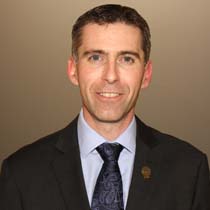Following is a report from Brian Alexander, assistant director of training and apprenticeship at the OETIO, who since March 2013 has chaired the hoisting engineers trade board of the Ontario College of Trades. It has been a privilege and honour to serve for almost five years as chair of the hoisting engineers trade board of the Ontario College of Trades. The board has been very active and much has been accomplished in the six years I have been on the board. I was first appointed to the hoisting engineers trade […]

Following is a report from Brian Alexander, assistant director of training and apprenticeship at the OETIO, who since March 2013 has chaired the hoisting engineers trade board of the Ontario College of Trades.
It has been a privilege and honour to serve for almost five years as chair of the hoisting engineers trade board of the Ontario College of Trades.
The board has been very active and much has been accomplished in the six years I have been on the board.
I was first appointed to the hoisting engineers trade board in February 2012, a little over a year before OCOT first began accepting members. Prior to that, I served a two-year appointment on the Ministry of Training, Colleges and Universities provincial advisory committee for the hoisting engineers trades. I was selected as chair of the OCOT hoisting engineers trade board on March, 26, 2013 and re-appointed to the board for a second term in 2015.
My current term on the board expires Feb, 14, 2018. Per the terms of the Ontario College of Trades and Apprenticeship Act, trade board members are not eligible to serve more than six consecutive years.
It is important for Local 793 to be represented on the trade board because it ensures the union is at the forefront of any decisions made that affect the hoisting trades. We can make sure that the concerns of our members are heard and work to ensure that the trades are protected and enhanced.
Business manager Mike Gallagher has always supported proactive involvement in trade-related training and health and safety committees. He supports the Ontario College of Trades because it places decision-making in the hands of those who understand the issues and feel the impact of those decisions. It also provides a path whereby a voluntary trade can become a compulsory trade.
I appreciate this approach, as it is much better to be at the table and engaged.
My time on the hoisting engineers trade board has been amongst the most fulfilling of any committee I’m involved with. It’s been great to have developed a rapport with OCOT staff to a point where they feel comfortable they can call you any time for advice and when they are struggling with an issue.
Since the inception of OCOT, the board has been very active dealing with all aspects of the hoisting trades. The trade board has issued three information notes geared to inform OCOT enforcement officers about issues relating to hoisting which impact health and safety for workers and the public, including:
- Enforcement of automotive wreckers and tow trucks performing hoisting/lifting activities for purposes other than to clear wrecks and haul vehicles – September 2013
- Supervision of crane apprentices – December 2014
- Identifying de-rated mobile cranes – May 2015
It’s interesting to note that OCOT enforcement officers laid charges in at least two separate instances where automotive wreckers were found being used as mobile cranes to perform work other than clearing wrecks and hauling vehicles. Operators did not have a Certificate of Qualification as a Hoisting Engineer and were subsequently charged. Not only is this practice incredibly unsafe, but it also takes work away from those who are properly qualified by having successfully completed an apprenticeship. Increased enforcement is one of the big benefits of the College.
OCOT policy personnel were also very supportive of the trade board’s position throughout the Canadian Council of Directors of Apprenticeship’s (CCDA) national harmonization project to not lower Ontario’s standard for mobile and tower crane apprenticeship training just for the sake of harmonizing with other provinces. Employer stakeholders who work nationally advised that, generally speaking, the best trained and safest crane operators are those who complete their apprenticeships in Ontario. OCOT never once suggested it would be best to lower the total number of apprenticeship hours for the hoisting trades for the sake of achieving the goals that CCDA had set for harmonizing the apprenticeship training requirements.
2018 is shaping up to be another busy year for the hoisting engineers trade board.
This year, the trade board plans to:
- Update the exam for the Hoisting Engineer – Mobile Crane Operator 2 (339C) trade (maximum hoisting capacities of >16,000 but no more than 30,000 pounds).
- Work towards implementing the new standard for the National Mobile Crane Operators Demonstration of Skills Test (DOST) which Local 793 and the OETIO were actively involved in developing.
- Update the training standards for both the mobile and tower crane trades.
- Work towards getting approval from the Ministry of Advanced Education and Skills Development for increasing the number of hours for Common Core Level 1 training to eight from six weeks to train in emerging new technologies in the craning industry.
To help continue the positive momentum of the past six years, I would encourage members who have a C of Q and a passion for the hoisting trades to apply for a position on the hoisting engineers trade board. All appointments to the College’s governing structure are handled through the Appointments Council. The link to the Council’s website is www.cot-appointments.ca.
If any member has a question about the College or the application process, feel free to call me at 905-469-9299 or send an email to balexander@oetio.com.
